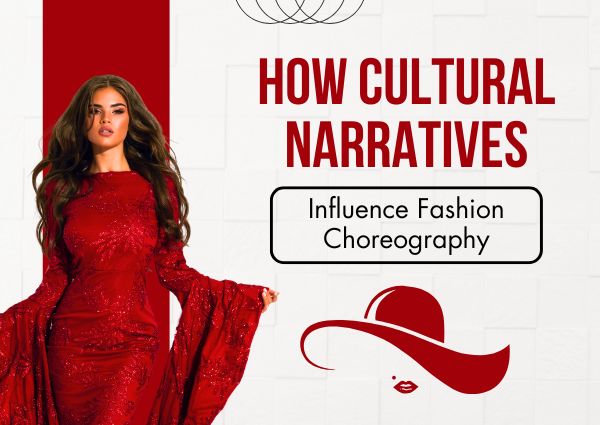What Are Cultural Narratives?
The common myths, customs, values, and beliefs of a community or culture are known as its cultural narratives. These stories shape how people see the world and express themselves. In fashion, these narratives manifest in patterns, silhouettes, textiles, accessories, gestures, and even the runway itself.
From Indian bridal lehengas adorned with mythology-inspired embroidery to Parisian couture echoing post-war liberation, culture defines not only what we wear—but also how we present it.
The Choreographer As a Cultural Storyteller
A fashion choreographer is not just a movement director. They are a visual storyteller, using space, rhythm, expressions, and posture to communicate a brand’s vision. When choreographing a fashion show, cultural narratives often serve as the core concept.
For example, when choreographing a show based on Japanese street fashion, the movements may reflect rebellion and freedom, capturing the essence of Harajuku culture. A show celebrating Indian heritage might include classical dance poses or temple walk stances, blending elegance with spiritual symbolism.
Global Influence, Local Roots
In today’s global fashion scene, there’s a powerful trend: glocalization. International fashion shows frequently incorporate culturally diverse components. But skilled choreographers ensure that this incorporation is respectful, authentic, and meaningful—not just aesthetic.
A prime example: At Paris Fashion Week, when Indian designer Rahul Mishra’s models glided down the runway with poise reminiscent of temple dancers, the choreography paid homage to Indian classical art while adhering to international norms of elegance and simplicity.
Fashion Weeks And Cultural Fusion
Fashion Weeks around the world—from Milan to Mumbai—are increasingly turning into cross-cultural celebrations. Choreographers are tasked with bridging the gap between cultural authenticity and audience accessibility.
They must answer questions like:
- How do we present African tribal prints with movement that celebrates strength and identity?
- How can a model’s stride reflect the fluidity of Korean hanbok?
- Can Flamenco-inspired postures enhance a Spanish collection without over-theatricalizing?
The answers lie in research, respect, and representation—the three pillars of culturally informed choreography.
Dance Forms And Runway Movement
Fashion choreography is now embracing dance-inspired storytelling. From ballet to bhangra, movement vocabulary is expanding.
- Indian Influence: Many Indian fashion shows incorporate mudras (hand gestures), slow turns, or even elements of Kathak and Bharatanatyam to enhance traditional collections.
- Streetwear Shows: Hip-hop and freestyle moves often dominate urban-themed collections, giving an edgy, relatable vibe to younger audiences.
- Couture Shows: Precision-based movements, often inspired by contemporary dance, are used to emphasize structure and craftsmanship.
By integrating dance with runway, choreographers create an emotional connection between the audience and the collection, influenced heavily by the narrative behind the culture.
Cultural Sensitivity In Fashion Choreography
Incorporating culture is powerful—but it comes with responsibility.
A choreographer must:
- Avoid stereotypes and caricatures.
- Collaborate with cultural consultants when exploring unfamiliar narratives.
- Ensure models are briefed on the significance of certain gestures or movements.
In today’s socially aware audience climate, authenticity trumps appropriation, and well-researched choreography adds credibility and emotional weight to the fashion story.
Case Study: India’s Fashion Evolution
India’s fashion choreography has come a long way—from simple catwalks to culturally layered storytelling. Designers now work closely with choreographers like Babla Kathuria to design shows where the model walk tells as much of a story as the garment.
A bridal collection might include a “pheras-inspired” circular walk to mimic the wedding ritual. An eco-fashion show may feature earthy soundscapes with barefoot models walking in slow, grounded rhythms to connect with the theme of sustainability.
These cultural influences make the show memorable—not just fashionable.
The Future Of Fashion Choreography
As fashion becomes more inclusive and diverse, cultural narratives will take center stage. The choreographer’s role will evolve into that of a cultural curator—someone who knows how to blend movement, identity, and storytelling seamlessly.
With the rise of digital shows and immersive experiences, cultural choreography will also enter 3D spaces, augmented reality, and global live-streamed performances—making it even more important to present culture with depth and dignity.
At Babla Kathuria, we believe every step on the runway is a step in a larger story. And when culture leads the way, the world not only watches—it listens.

